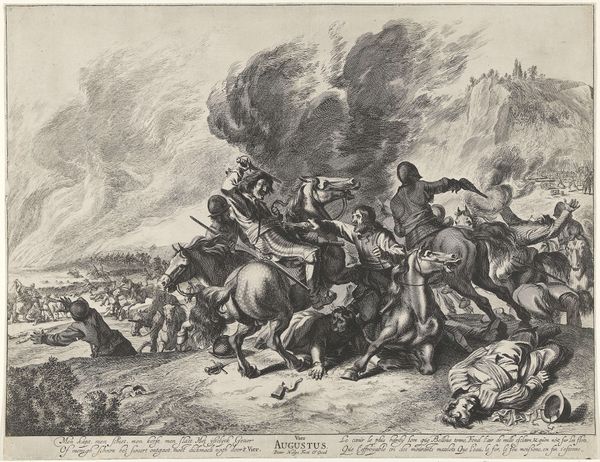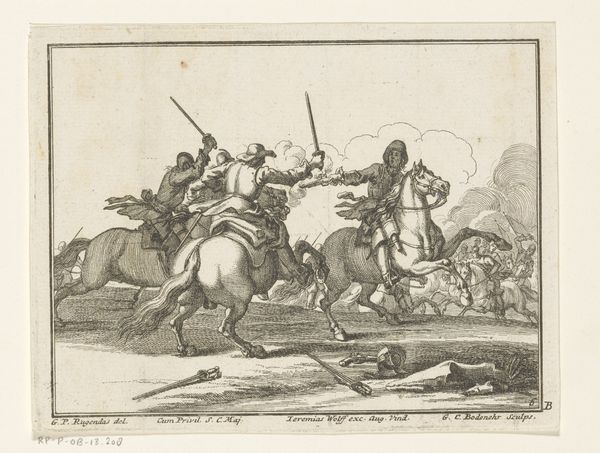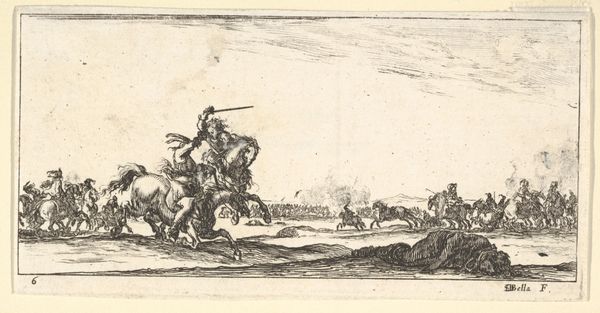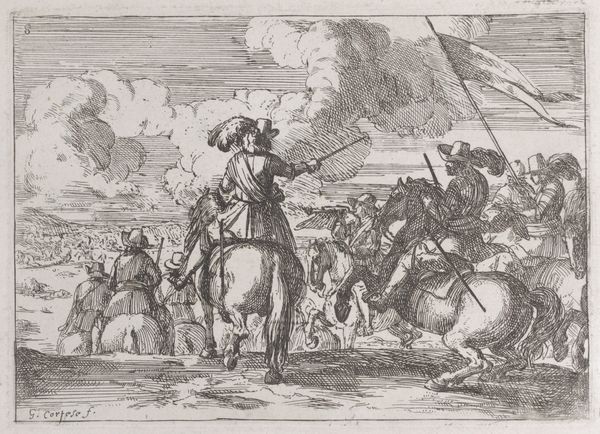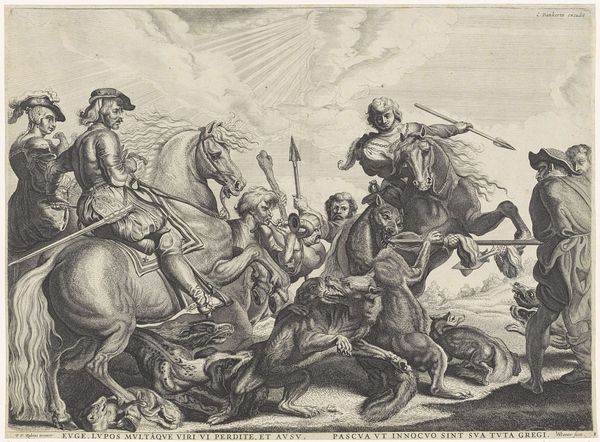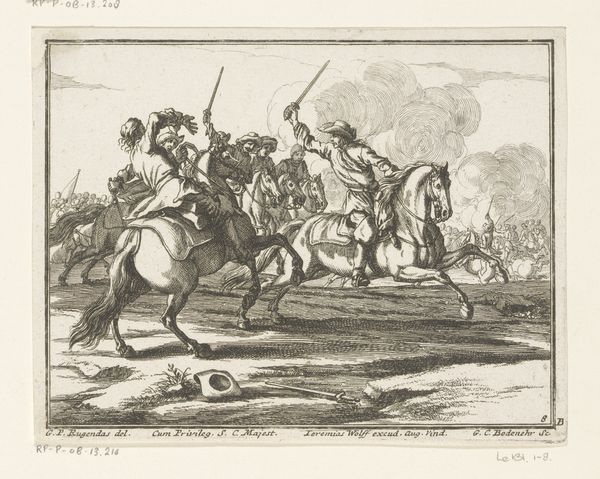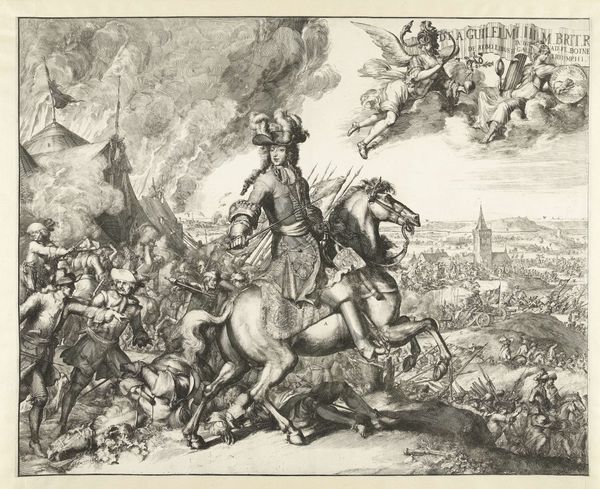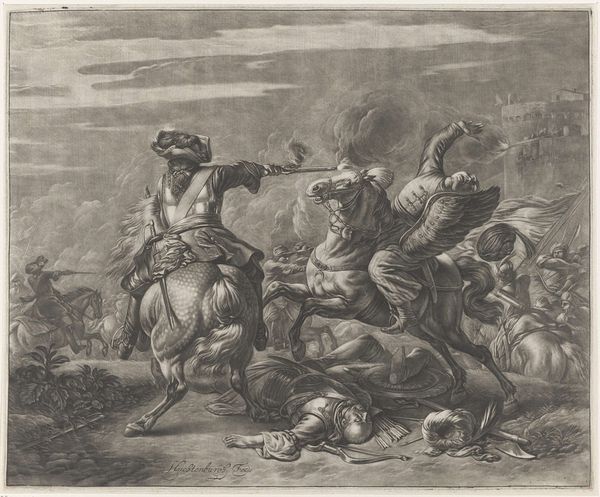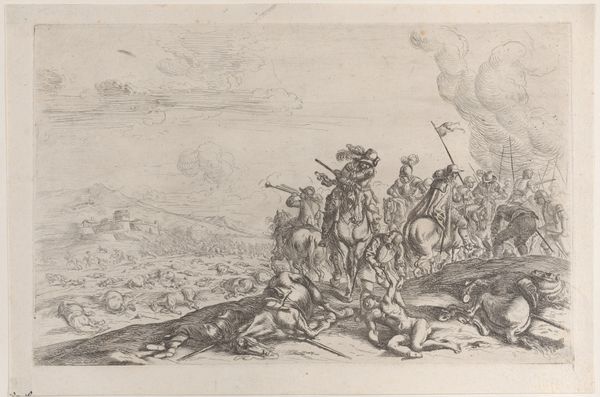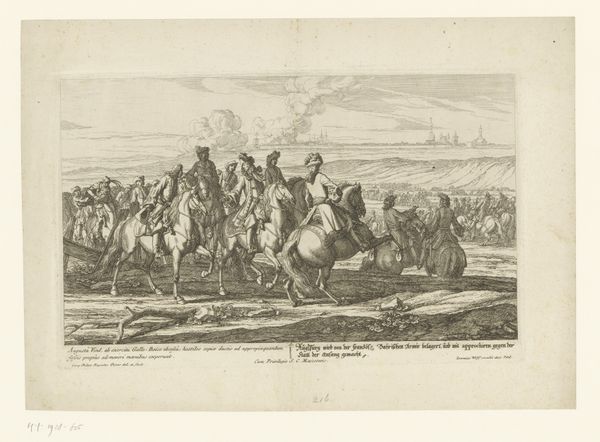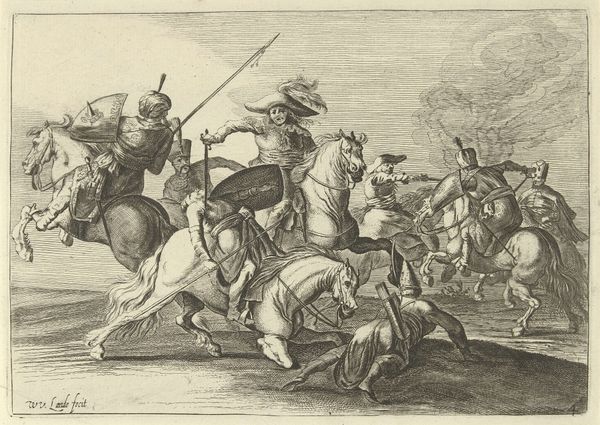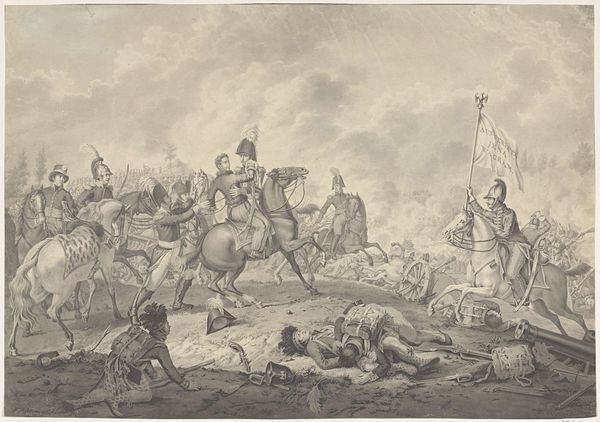
print, engraving
#
narrative-art
#
baroque
# print
#
figuration
#
history-painting
#
engraving
Dimensions: height 122 mm, width 158 mm
Copyright: Rijks Museum: Open Domain
Curator: This engraving, titled "Ruitergevecht tegen Ottomanen," or "Cavalry Combat Against Ottomans," was created sometime between 1686 and 1710, by Georg Conrad Bodenehr. Editor: My initial reaction is one of chaotic energy. There’s so much motion depicted, horses rearing, figures locked in battle. It really captures the intensity, the almost frantic nature of warfare. Curator: Indeed. It’s fascinating how the baroque style lends itself to these dynamic compositions. This particular print offers us insight into 17th and 18th century European perspectives on conflicts with the Ottoman Empire. Look at the medium itself, the engraving. The lines are incredibly detailed, considering the laborious process involved in creating such an image. Editor: Precisely. Think about who was consuming images like this. Prints were relatively accessible, and this would have circulated widely, shaping opinions, reinforcing existing biases and narratives about the 'Other'. The portrayal of the Ottoman figures versus the European figures certainly speaks to power dynamics. Curator: Good point. We see that difference even in the depiction of armor and weaponry, potentially influencing the perceived capabilities and savagery of each side. It’s important to remember that the creation of an image is labor; producing images, circulating and consuming images contribute to social value. Editor: And, more than just military might. Consider also what visual narratives like these do in terms of constructing and solidifying national and cultural identities. It's a piece of propaganda as much as it is art. By positioning 'us' against 'them', it serves a very specific political function. Curator: Certainly, there's an element of mythmaking involved. This engraving, as an object, had the capacity to shape historical memory, both accurate and inaccurate, related to European-Ottoman conflict. The social context of the artist and workshop and the social meaning generated through making. It gives us a window into understanding value systems, production and meaning. Editor: Reflecting on the material aspects as well as social-historical contexts really unlocks the narratives woven into the very fabric of its making and its reception. Curator: Absolutely, examining the creation, distribution, and consumption allows for a richer experience and expands understanding far beyond just aesthetics or battlefield tactics.
Comments
No comments
Be the first to comment and join the conversation on the ultimate creative platform.

